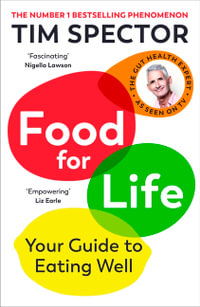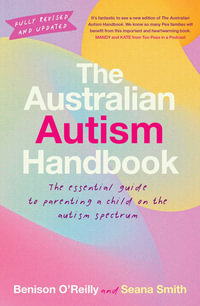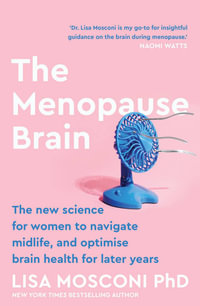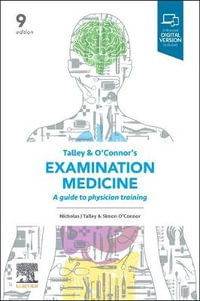
At a Glance
512 Pages
New edition
25.5 x 18.0 x 3.0
Paperback
$84.90
or 4 interest-free payments of $21.23 with
orAims to ship in 10 to 15 business days
The Power of Plagues presents a rogues' gallery of epidemic- causing microorganisms placed in the context of world history. Author Irwin W. Sherman introduces the microbes that caused these epidemics and the people who sought (and still seek) to understand how diseases and epidemics are managed. What makes this book especially fascinating are the many threads that Sherman weaves together as he explains how plagues past and present have shaped the outcome of wars and altered the course of medicine, religion, education, feudalism, and science. Cholera gave birth to the field of epidemiology. The bubonic plague epidemic that began in 1346 led to the formation of universities in cities far from the major centers of learning (and hot spots of the Black Death) at that time. And the Anopheles mosquito and malaria aided General George Washington during the American Revolution. Sadly, when microbes have inflicted death and suffering, people have sometimes responded by invoking discrimination, scapegoating, and quarantine, often unfairly, against races or classes of people presumed to be the cause of the epidemic.
Pathogens are not the only stars of this book. Many scientists and physicians who toiled to understand, treat, and prevent these plagues are also featured. Sherman tells engaging tales of the development of vaccines, anesthesia, antiseptics, and antibiotics. This arsenal has dramatically reduced the suffering and death caused by infectious diseases, but these plague protectors are imperfect, due to their side effects or attenuation and because microbes almost invariably develop resistance to antimicrobial drugs.
The Power of Plagues provides a sobering reminder that plagues are not a thing of the past. Along with the persistence of tuberculosis, malaria, river blindness, and AIDS, emerging and remerging epidemics continue to confound global and national public health efforts. West Nile virus, Lyme disease, and Ebola and Zika viruses are just some of the newest rogues to plague humans.
The argument that civilization has been shaped to a significant degree by the power of plagues is compelling, and The Power of Plagues makes the case in an engaging and informative way that will be satisfying to scientists and non-scientists alike.
Industry Reviews
REVIEW 1
Microbiology nonfiction books tend to fall into the academic category, basically as curated collections of review articles that detail a relatively specialized niche of the field. At the other end of the spectrum lie those books written purely for a general audience that might bring in microbiological themes within a larger scope, usually human health.
To make a theological comparison, the latter can be like reading the book of Ruth (which doesn't even mention God), and the former like Leviticus (which is filled with laws and measurements related to dealing with God). Both are valuable. The casual, uninitiated reader isn't usually keen to drown in dry details, while the discerning reader with foundational knowledge might crave something more than a surface skim. The Power of Plagues is an example of a much rarer book that attempts to balance those two extremes. The many readers of this blog who have a deep interest in microbiology or disease — but who aren't specialists that need to pour over drier minutiae — will appreciate this book, now in its second edition.
Sherman, a Professor Emeritus (UC Riverside), Visiting Professor (UCSD), and researcher into the biochemistry of malaria has the background to give readers microbiological details. And he frequently does so, such as when discussing mechanisms of artemisinin activity and resistance in Plasmodium. But he avoids going too deeply into that rabbit hole of scientific detail, or getting caught up in the style of academic review articles. Instead he writes with a straight-forward and naturally flowing text that emphasizes historical anecdotes and cultural references. For example, in a chapter on Yersinia pestis, Sherman describes actions taken by the Venetian Republic to restrict dis-embarkment from cargo ships for 40 days (a quaranta that gave rise to our word quarantine). Soon after he discusses cultural impacts of the Plague, from Bruegel paintings to Monty Python and the Holy Grail.
The Power of Plagues devotes most of its chapters to the stories of a specific pathogen/disease that has affected humans on a large scale through outbreak or epidemic. Most of these 'plagues' are bacterial (e.g. Cholera, Typhus, Leprosy), with HIV and Smallpox featured from the viruses, and a chapter on malaria including the sole featured protist. However, other viruses (e.g. Influenza, Measles) appear in a chapter devoted to Immunization, and Sherman discusses some viruses, protists, and animal parasites within chapters entitled "Six Plagues of Africa" and "Emerging and Re-Emerging Plagues." As far as I can recall, fungi don't appear, besides being mentioned as secondary AIDS-related infections. Given the increasing problems of fungal infection to animals in general (including humans), I find this unfortunate.
The strong focus of each chapter is a strength of the book, one that makes it not only a good book for general reading, but also for use in classes with specific chapters as supplemental material, or the entire text in a history of disease survey. However, the organization of the chapters themselves in the book perplexes. The book opens and closes with reasonable topics. But in between, the chapters are placed seemingly randomly.
The first chapter defines "The Nature of Plagues," and the two that follow provide historical context, one regarding how plague outbreaks are affected by human civilization and then one with a survey of "Six Plagues of Antiquity." The actual microbiological agent responsible for some of these ancient plagues remains controversial in some cases, but Sherman addresses the predominant interpretations and the data that has led researchers to particular conclusions. Unfortunately, this chapter first introduces the problem that some diseases or species are mentioned across different chapters of the book, leading to redundancies in the text.
Rather than continuing on a temporal organization of chapter topics, Sherman follows these chapters of context with one on the Black Death, but then jumps to AIDS, and then to Typhus. In the middle of this disease-specific heart of the book is the aforementioned chapter on immunization and one that follows on antisepsis and antibiotics. The end of the book then features the chapters mentioned above on 'miscellaneous' African diseases and emerging diseases. This last chapter is new to the second edition of The Power of Plagues, and may not be substantive enough to warrant a new copy if you've already read the first. I'm unclear exactly how much other chapters have been updated, although errors from the first edition that were subsequently noted have been corrected.
"Six Plagues of Africa" illustrates, in part, the only significant critique I have of The Power of Plagues, namely that the text often seems outdated in cultural perspective and representation. Lumping these diseases together based on geography and given them only cursory treatment is problematic, when each warrants the same in-depth treatment as the previous topics receive. Similar issues arise in the earlier chapter on AIDS that Sherman ends with ideas that seem stuck in the conservative 1980s.
Despite such criticism, The Power of Plagues is a fantastic read overall, with broad appeal, and could be effectively read in parts and in whatever order desired. It includes appendices that cover biological concepts that might not be familiar to some readers, as well as a bibliography and works cited for those facts that are referenced in text. The full-color photos and illustrations are wonderful, significantly adding a visual perspective to many of the historical events Sherman addresses.
—Daniel Haeusse, Small Things Considered Book Review, posted 25 February 2019
REVIEW 2
The world is awash in books about disease, and most of these fall into one of two categories. First are the ones with chipper, upbeat (and virtually always incorrect) advice about how “one simple trick,” whether via diet, exercise, supplements, or another practice, can cure all ills and save the reader from the dire medical establishment and Big Pharma. Alternatively, we have what I call “Ebola is coming and we are all going to die” books, which invoke grim statistics about the state of our readiness to deal with the new epidemic that is about to spiral out of control.
Mercifully, Irwin Sherman's new edition of The Power of Plagues follows neither of these overworked tropes. In the spirit of full disclosure, I should point out that the author and I were colleagues at the University of California, Riverside, for many years, and that he wrote the first edition of the book as an accompaniment to a nonmajors course that he, and later I, taught there. The book, and the course, was designed not only to show student show important human diseases have been in the course of history, but also to teach basic principles of biology such as the differences between bacteria and viruses or the nature of the immune system. Understanding T cells and lymph nodes for their own sake is not nearly as compelling as understanding them because they provide an insight into how vaccination works or why acquired immune deficiency syndrome (AIDS) is so difficult to treat. The book is thus a window into biology motivated by interest in pathogens and how they have changed—and been changed by—human behavior.
The Power of Plagues takes a very loosely historical approach to a host of important diseases, starting with the way that ancient diseases such as tuberculosis, malaria, or measles were facilitated by humans settling down into sedentary communities. It does not attempt to be comprehensive, and readers may find that their “favorite” parasite is left out, but each disease is a fulcrum for making a larger point. Thus, cholera serves to illustrate how microbes were eventually recognized as the cause of many diseases, with a lesson about the classic experiments by Francesco Redi, Lazzaro Spallanzani, and Louis Pasteur along the way (Incidentally, I often ask classes to predict the outcome of the famous swan neck flasks with broth experiments that Pasteur designed; it is surprising how difficult a task they find this, underscoring how nonintuitive the results of such experiments can be.) Smallpox highlights the social context of vaccination, and Sherman notes that compulsory vaccination has a long history. The Germans required that all citizens, and especially members of the army, be vaccinated against smallpox by 1869, whereas no such rule existed in France, with the result that in the Franco-Prussian War, smallpox killed nearly eight times more French than German soldiers.
Every chapter is filled with people who were instrumental in describing, treating, or curing a disease, and although Sherman mentions the usual suspects—Ross, Selman, and Jenner—he also highlights some of the lesser known figures in the history of disease, such as William MacCallum and Eurgene Opie from Johns Hopkins,who used avian malaria to elucidate the life cycle of the blood parasites in humans. He also notes some controversies surrounding major achievements in medical history: why, for example, did Salk, Koprowski, and Sabin not share in the Nobel Prize for developing the polio vaccine? According to Sherman, in Salk's case, it is because “Salk had broken two of the commandments of scientific research. Thou shalt give credit to others. Thou shalt not discuss one's work in newspapers and magazines.” It is interesting to reflect on the relevance of the latter statement in this age of social media—if Twitter were available, Salk would have been a formidable tweeter, I suspect, and it likely would have done him more good than harm.
Other controversies are almost consoling to read about because they remind us that acrimony over scientific credit and accomplishments is nothing new, particularly when the conflicts are overlain with nationalism. The Italian scientist Giovanni Battista Grassi demonstrated that mosquitoes transmit human malaria and expected that he—and his country—would be recognized for this groundbreaking accomplishment, but was challenged by the British physician Ronald Ross, whose name is more commonly associated with the discovery. The two squabbled about priority, literally for decades, and it was Ross, but not Grassi, who received the Nobel Prize in 1902.
In addition to chapters centered on particular diseases and their associated concepts (cholera and public sanitation, AIDS and the immune system), The Power of Plagues considers the ways in which anesthesia, antiseptics, and antibiotics transformed medicine. The history of the first is particularly colorful, and Sherman explains that until reliable anesthetics were available, surgeons prided themselves on the speed with which they could accomplish their task. One such surgeon, Robert Liston, is said to have "amputated a leg in two and a half minutes, but the patient died shortly thereafter from gangrene (as was often the case in those days): in addition, he amputated the fingers of his young assistant, who also died later from gangrene, and slashed the coattails of a distinguished surgical spectator, who was so terrified that the knife had pierced his vital organs that he dropped dead in fright. So ended the only operation in history with 300% mortality!" We would all do well to remember those days, as did a Thanksgiving essay by A. J. Jacobs on gratitude from the New York Times, which mused, "Whenever I start to mythologize the past, I repeat a three-word mantra I made up: 'Surgery without anesthesia.'" (https://www.nytimes.com/2018/11/17/opinion/sunday/thanksgiving-gratitude-thanks.html?action=click&module=Opinion&pgtype=Homepage).
The chapter on syphilis gives a particularly compelling lesson on how public perception of a disease influences the way it is managed; the notion that those who contracted a sexually transmitted infection were to blame for their sins led to misinformation about syphilis being transferred on pens, drinking cups, or toilet seats. Immigrants and sex workers were also targeted as centers of infection, with an anti-sexually transmitted infection effort during World War I resulting in the quarantine of thousands of women living and working near military training sites.
This new edition includes more images, most in color, than the first edition, which was published in 2006. They range from historical illustrations, such as the one showing the first operation conducted with the patient anesthetized with ether, to the obligatory gory photographs of people afflicted with river blindness or Hansen's disease. The new edition also provides a useful “coda” at the end of each chapter, offering a succinct summary of the major events in history affected by each disease and how the disease illustrates scientific advances.
The book is written for a general audience, and works well as an undergraduate text, although it probably does not have enough biological detail for a class focusing on the biology, rather than the social and historical context, of disease. It makes for good coffee-table browsing, although perhaps not for the overly squeamish (see aforementioned images), and serves as a valuable reminder that plagues, perhaps even more than the poor, will always be with us.
—Marlene Zuk, Department of Ecology, Evolution and Behavior, University of Minnesota, Minneapolis, MN from Am J Trop Med Hyg, 100(2), 2019, p. 480-481
REVIEW 3
"The Power of Plagues, second edition, updates the author's 2006 original work (also reviewed in Clinical Infectious Diseases [1]), and includes all of the first edition's topics plus an additional chapter, "Emerging and Re-emerging Plagues." The author states that among his objectives is providing a "status report" on emerging infectious diseases, and indeed this final chapter does include recently emerging pathogens, such as Ebola and Zika viruses. It is unclear to what extent other chapters were revised; the chapter on human immunodeficiency virus (HIV) is particularly outdated. The book is written with topical rather than chronological organization, and the author states that his intent was for the chapters to be more or less independent; however, when read from start to finish, this book felt duplicative and disorganized.
The book begins with several introductory chapters on the nature of plagues and how they have affected human civilizations throughout history. The author then shifts to more disease-focused discussions of plague, HIV, cholera, and smallpox, before diverting back to more general chapters on immunization, antisepsis, and antibiotics (which include tangential sections on various anesthetics), then returning to disease-specific chapters on syphilis, tuberculosis, and leprosy. He concludes with summary chapters on “6 Plagues of Africa” and the aforementioned "Emerging and Re-emerging Plagues."
The author introduces a number of different historical characters and themes and attempts to to weave them together throughout the book, with limited success. For example, he delves into immunization as relevant to each disease, but then in the chapter focusing on immunization midway through the book, rather than discussing vaccines as a coherent theme, he introduces numerous other diseases, such as measles, mumps, varicella, influenza, and pertussis. Rather than focusing on their contribution to our understanding of immunization, he delves into each in clinical detail that just ends up feeling tangential. Similar to the arrangement of the book as a whole, the organization of each chapter often seems illogical, with historical background, pathogenesis, epidemiology, clinical impact, and prevention often intermixed in a seemingly haphazard fashion.
Where the book proves most interesting is in its discussion of the historical context of each disease and the interplay/competition between different scientists, and the author includes many artistic works that help demonstrate how these diseases were viewed at the time. However, much of this history is interspersed between the various chapters (probably because many of the scientists worked on more than one disease), feeling redundant and making the book unnecessarily long. At nearly 500 pages, it would benefit from tighter editing and focus.
At the same time, despite stating an objective to demonstrate "how past experience can prepare us for future encounters" in the preface (p vii), the author missed opportunities to discuss the response to the 2009 influenza pandemic or to even mention either HIV treatment as prevention or preexposure prophylaxis in the section titled "Control of AIDS" (instead focusing on abstinence, monogamy, and changing risky behavior). Similarly, there is relatively brief discussion of the 2014 Ebola outbreak, without any mention of the cases diagnosed in the United States and the massive public health response that continues to this day. Some material just seems out of place; for example, the introductory chapter includes a brief discussion of the 2015 Disneyland measles outbreak linked to undervaccination, but there is no mention, in the measles or other sections of the immunization chapter, of the antivaccination movement and the threat it poses of disease reemergence.
Unfortunately, this second edition suffers from many of the same problems noted by the reviewers of the first edition [1], including absence of specific references, some frank factual errors (eg, that single-tablet antiretroviral regimens are currently available for $100 per year [p 106]; that only 1 dose of varicella vaccine is recommended for children [p 250]), and lack of clinical insight, with incorrect or outdated statements about clinical treatment (eg, that antiretrovirals are offered only at CD4 cell counts
Overall, those particularly interested in medical anthropology and the historical context of infectious disease outbreaks would find this book worthwhile, along with Jared Diamond's Guns, Germs and Steel and Steven Johnson's The Ghost Map. Those interested in a more clinically accurate and relevant text should look elsewhere.
—Marci Drees, MD, MS, Christiana Care Health System, Newark, Delaware
REVIEW 4
A usual dictionary definition of plague (a highly infectious, usually fatal epidemic disease; a pestilence; https://www.thefreedictionary.com) differs from that used by Irwin W. Sherman in his book The Power of Plagues. To accomplish his purpose in writing this book ("to make the science of epidemic diseases—plagues—accessible and understandable"), Sherman borrows his definition from historian Asa Briggs: "Plagues are a dramatic unfolding of events; they are stories of discovery, reaction, conflict and resilience of local and administrative structures."
This book is a history of humanity as influenced and shaped by plagues of known and unknown etiology. One of its strengths is also one of its weaknesses. To trace our journey from 4 million years ago to the present, weaving in plagues, people, microorganisms, and advances in technology, is no small feat. However, for the most part, Sherman accomplishes this goal in what is a very readable book that should appeal to a wide variety of audiences. Indeed, it should be read by every student of medicine and the health professions.
Did you know that Pharaoh's plague and snail fever are the same disease, or that war fever and jail fever are also caused by the same microorganism? Can you name 10 famous people who had syphilis or 20 famous people who died of tuberculosis? Did you know that heroin at one time was a treatment for the very troublesome cough of tuberculosis? Along with the answers to these questions, in this book you will find how plagues shaped history from ancient times to Napoleon's invasion of Russia to the very modern plagues of HIV/AIDS, influenza, and Lyme disease.
The art or photographic reproductions, usually placed at the beginning of a chapter, are a most powerful method of connecting the reader to what life was like at a given time in history. For example, look at Figure 6.1, Eugen Le Roux's engraving of Napoleon's troops in Vilna after the Russian Campaign in 1812, or Figure 5.1, a photograph of Lorraine, age 11, who has AIDS, being comforted by her grandmother.
Errors in the first edition, noted by Rigau-Perez (1), have been corrected. The placement of AIDS in Chapter 5 (A 21st Century Plague, AIDS), immediately after the chapter on the Black Death, is out of order chronologically and disrupts the history timeline. Chapters 10 (Preventing Plagues: Immunization) and 11 (The Plague Protectors: Antisepsis to Antibiotics) could easily be deleted in favor of more detail or artwork. However, these criticisms are minor. The major strength of this book is that it is a very readable history of humanity as shaped by plagues, making it attractive to a wide audience.
—Thomas J. Marrie, Dalhousie University, Halifax, Nova Scotia, Canada
Preface vii
1. The Nature of Plagues 1
2. Plagues, the Price of Being Sedentary 23
3. Six Plagues of Antiquity 43
4. An Ancient Plague, the Black Death 67
5. A Modern Plague, AIDS 89
6. Typhus, A Fever Plague 117
7. Malaria, Another Fever Plague 135
8. King Cholera 159
9. Smallpox, The Spotted Plague 191
10. Preventing Plagues 211
11. The Plague Protectors 231
12. The Great Pox Syphilis 255
13. The People’s Plague: Tuberculosis 275
14. Leprosy, the Striking Hand of God 303
15. Six Plagues of Africa 313
16. Plagues without Germs 355
17. Plagues On Order 383
Appendix. Cells and Viruses 401
General Works on Disease and History 405
Notes 407
Index 419
ISBN: 9781683670001
ISBN-10: 1683670000
Series: ASM Books
Published: 20th June 2017
Format: Paperback
Language: English
Number of Pages: 512
Audience: Professional and Scholarly
Publisher: John Wiley & Sons Inc (US)
Country of Publication: US
Edition Number: 2
Edition Type: New edition
Dimensions (cm): 25.5 x 18.0 x 3.0
Weight (kg): 1.05
Shipping
| Standard Shipping | Express Shipping | |
|---|---|---|
| Metro postcodes: | $9.99 | $14.95 |
| Regional postcodes: | $9.99 | $14.95 |
| Rural postcodes: | $9.99 | $14.95 |
How to return your order
At Booktopia, we offer hassle-free returns in accordance with our returns policy. If you wish to return an item, please get in touch with Booktopia Customer Care.
Additional postage charges may be applicable.
Defective items
If there is a problem with any of the items received for your order then the Booktopia Customer Care team is ready to assist you.
For more info please visit our Help Centre.
You Can Find This Book In

Renal Diet Cookbook for the Newly Diagnosed
The Complete Guide to Managing Kidney Disease and Avoiding Dialysis
Paperback
RRP $39.99
$32.25
OFF
This product is categorised by
- Non-FictionScienceBiology, Life SciencesMicrobiology excluding Medical
- Non-FictionScienceScience in GeneralHistory of Science
- Non-FictionMedicineClinical & Internal MedicineDiseases & DisordersInfectious & Contagious Diseases
- Non-FictionScienceBiology, Life SciencesMolecular Biology
- Non-FictionMedicineMedicine in GeneralHistory of Medicine
- Non-FictionMedicineMedicine in GeneralPublic Health & Preventive MedicinePersonal & Public Health / Health Education
- Non-FictionMedicineClinical & Internal Medicine






















